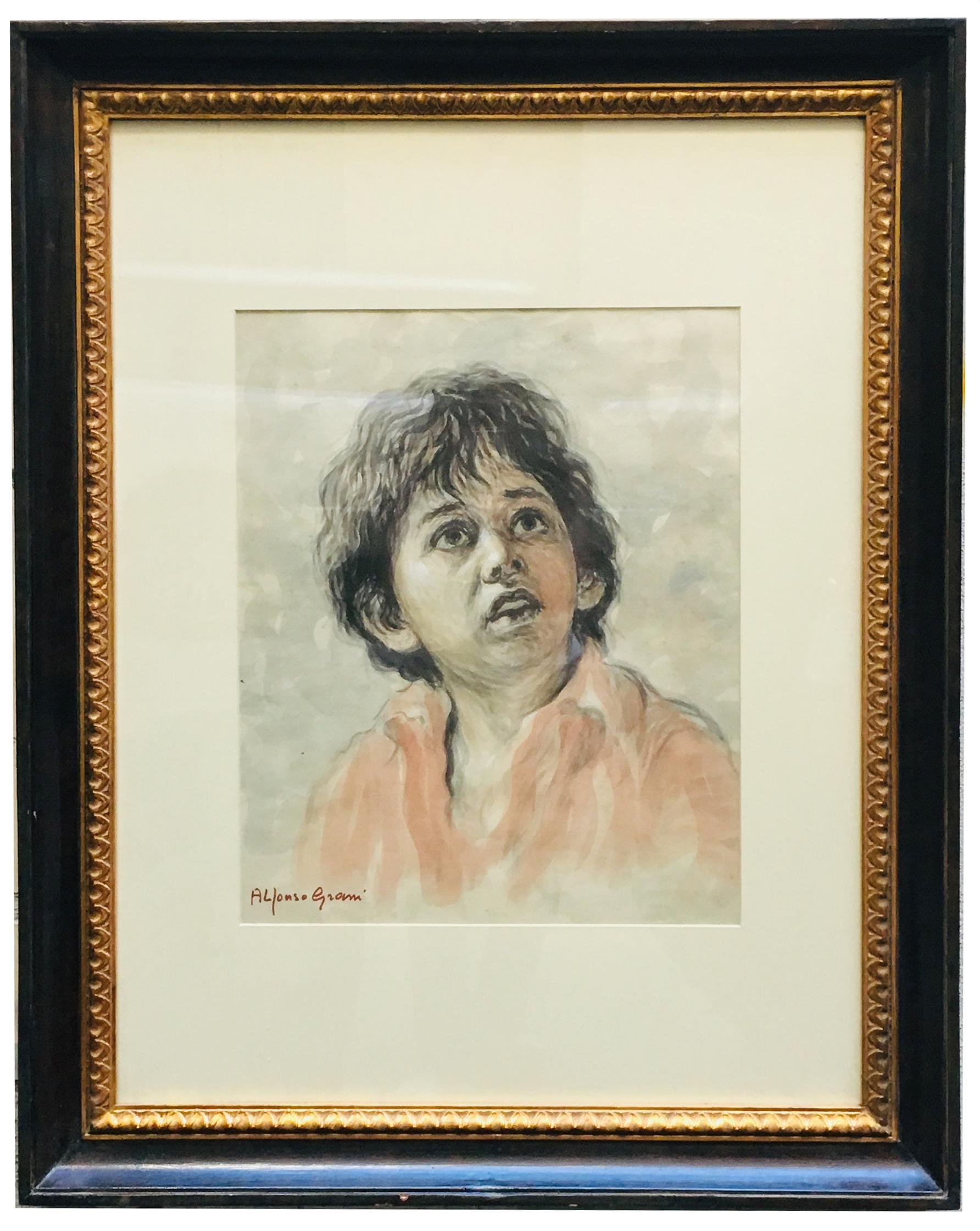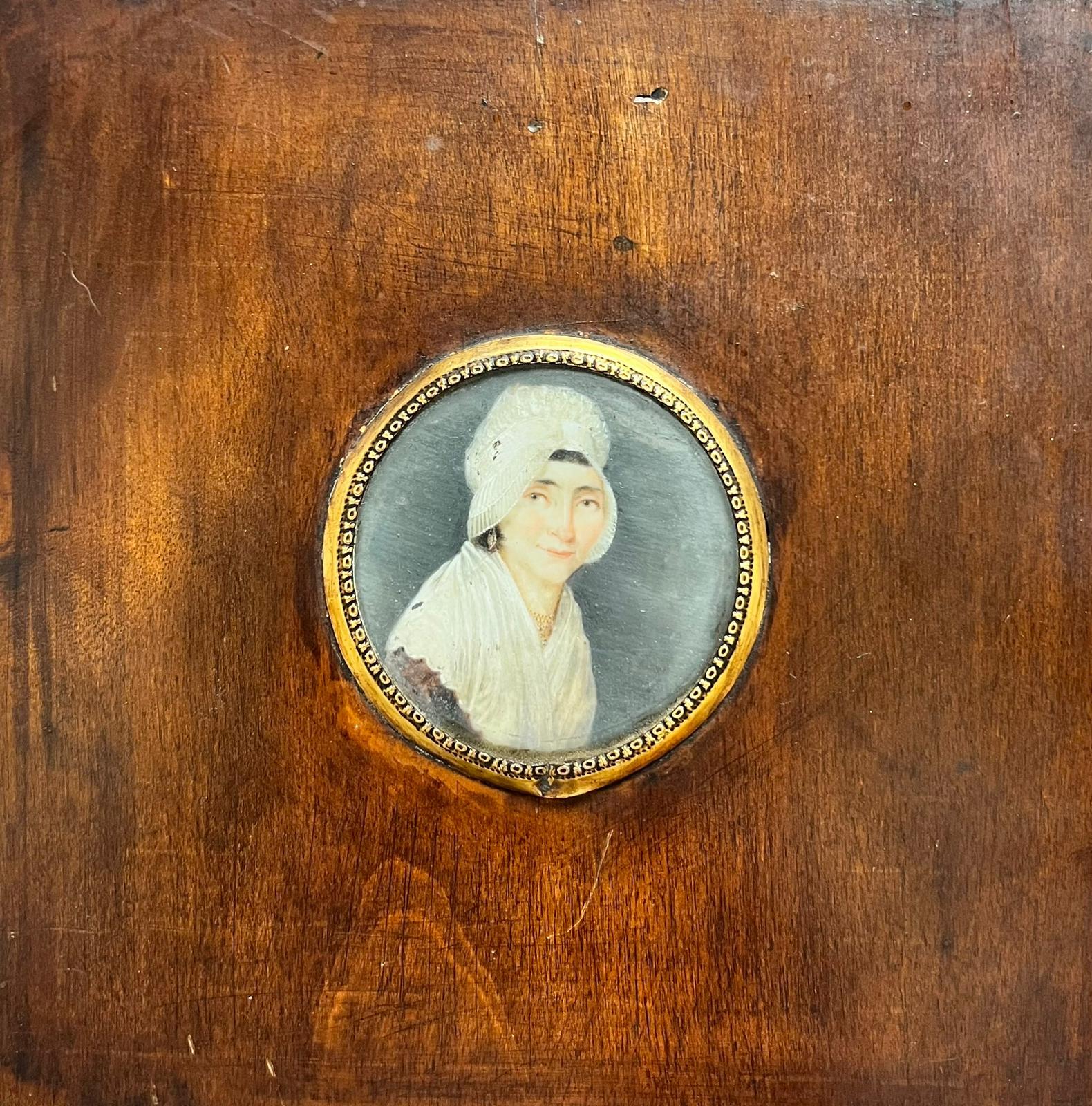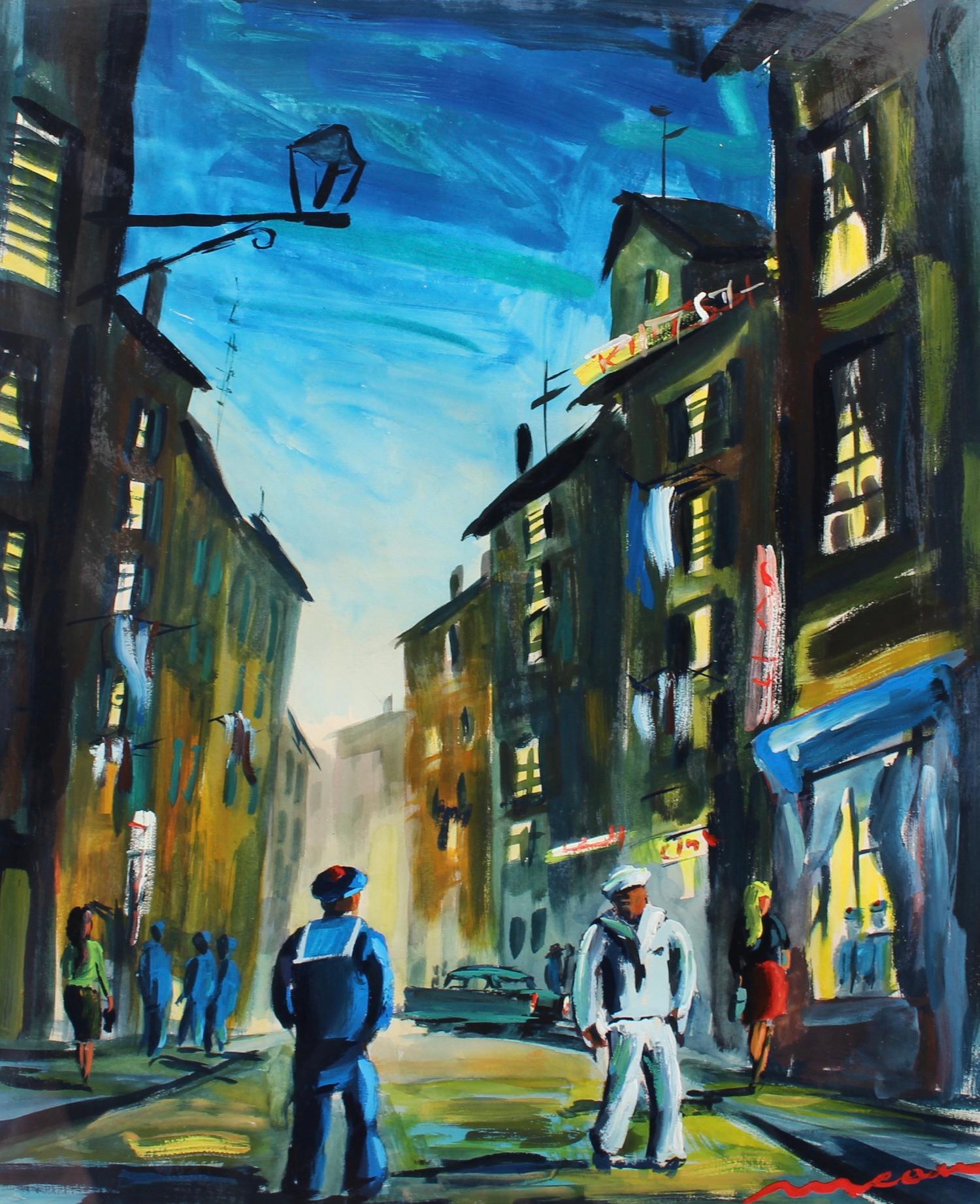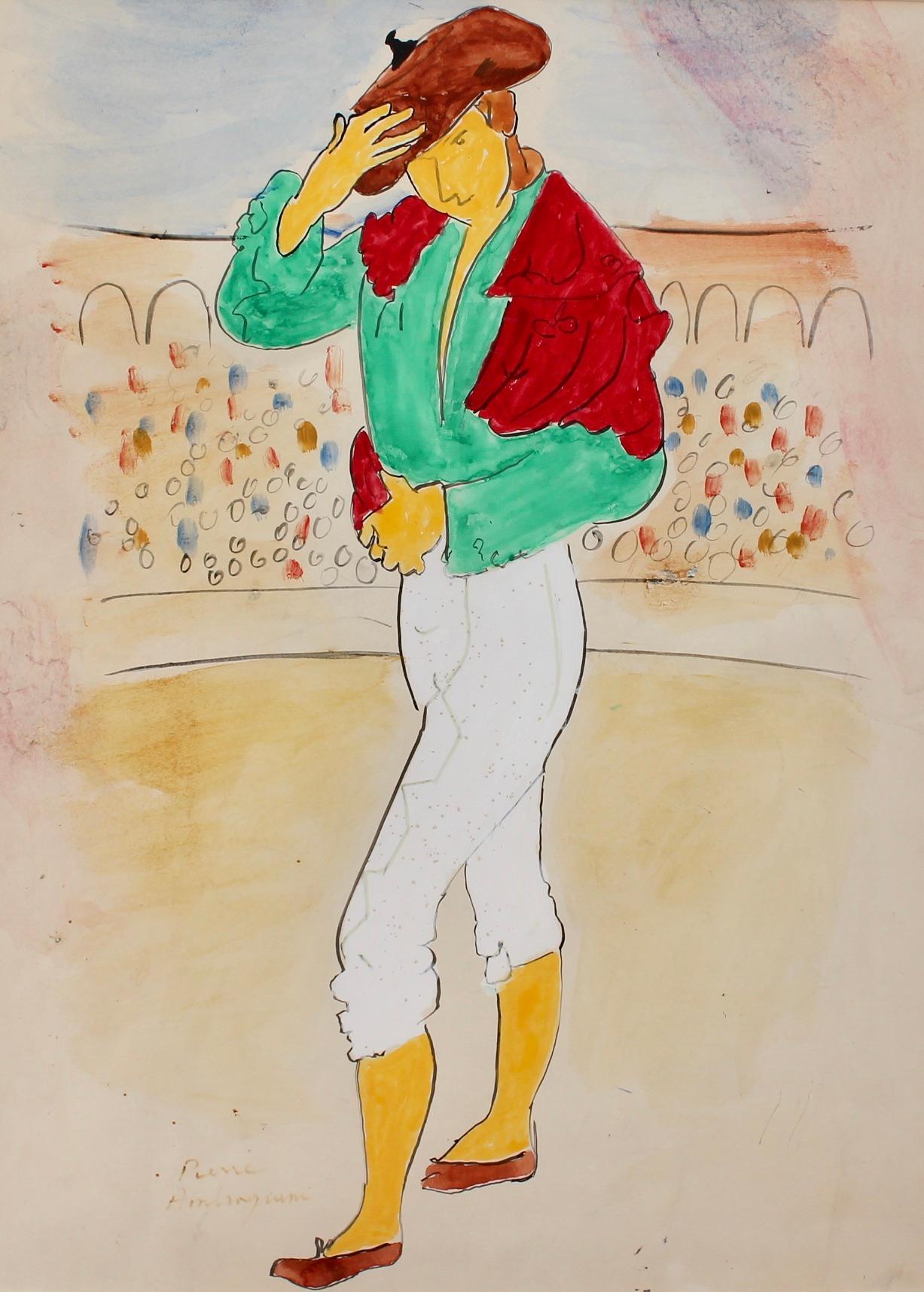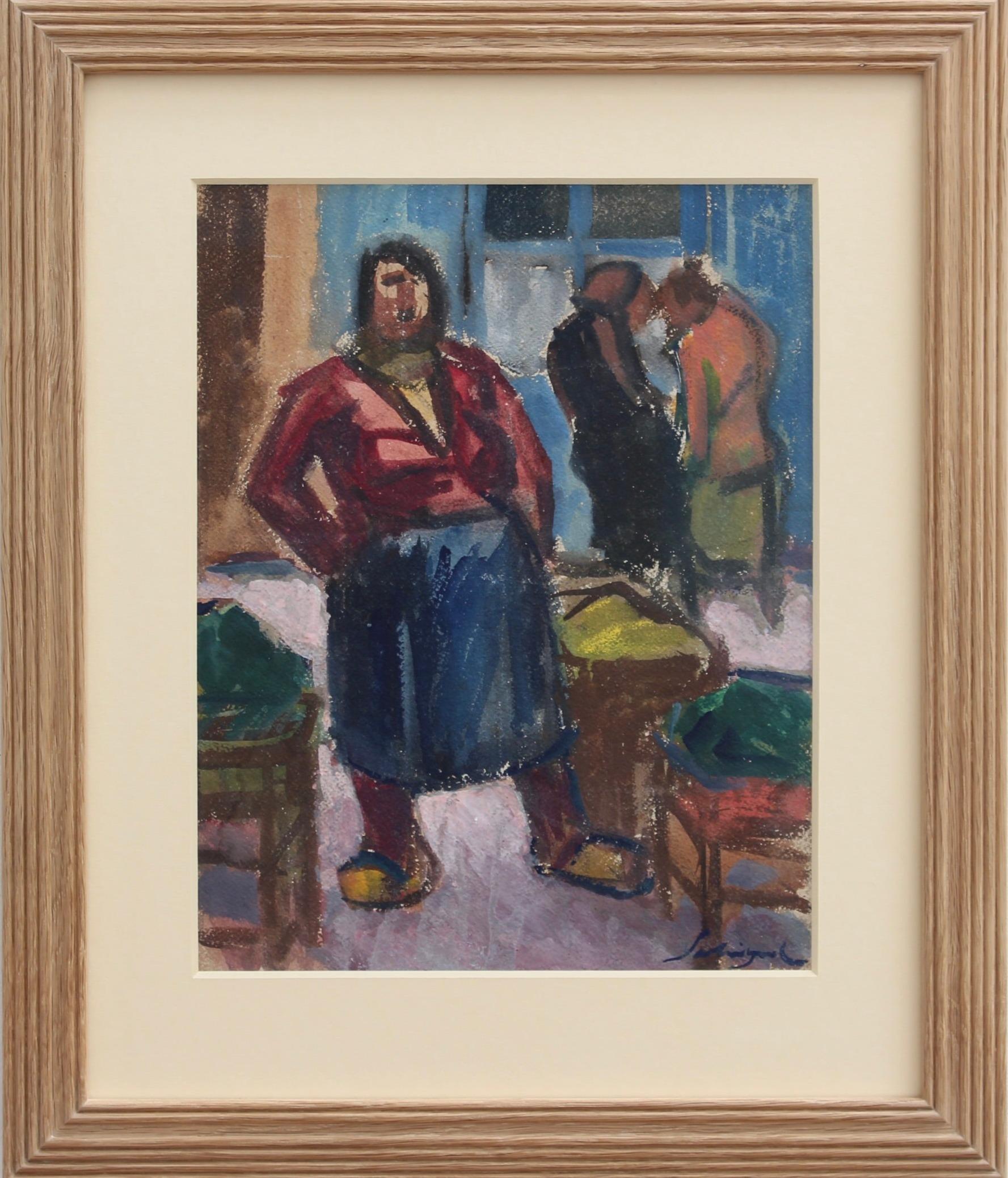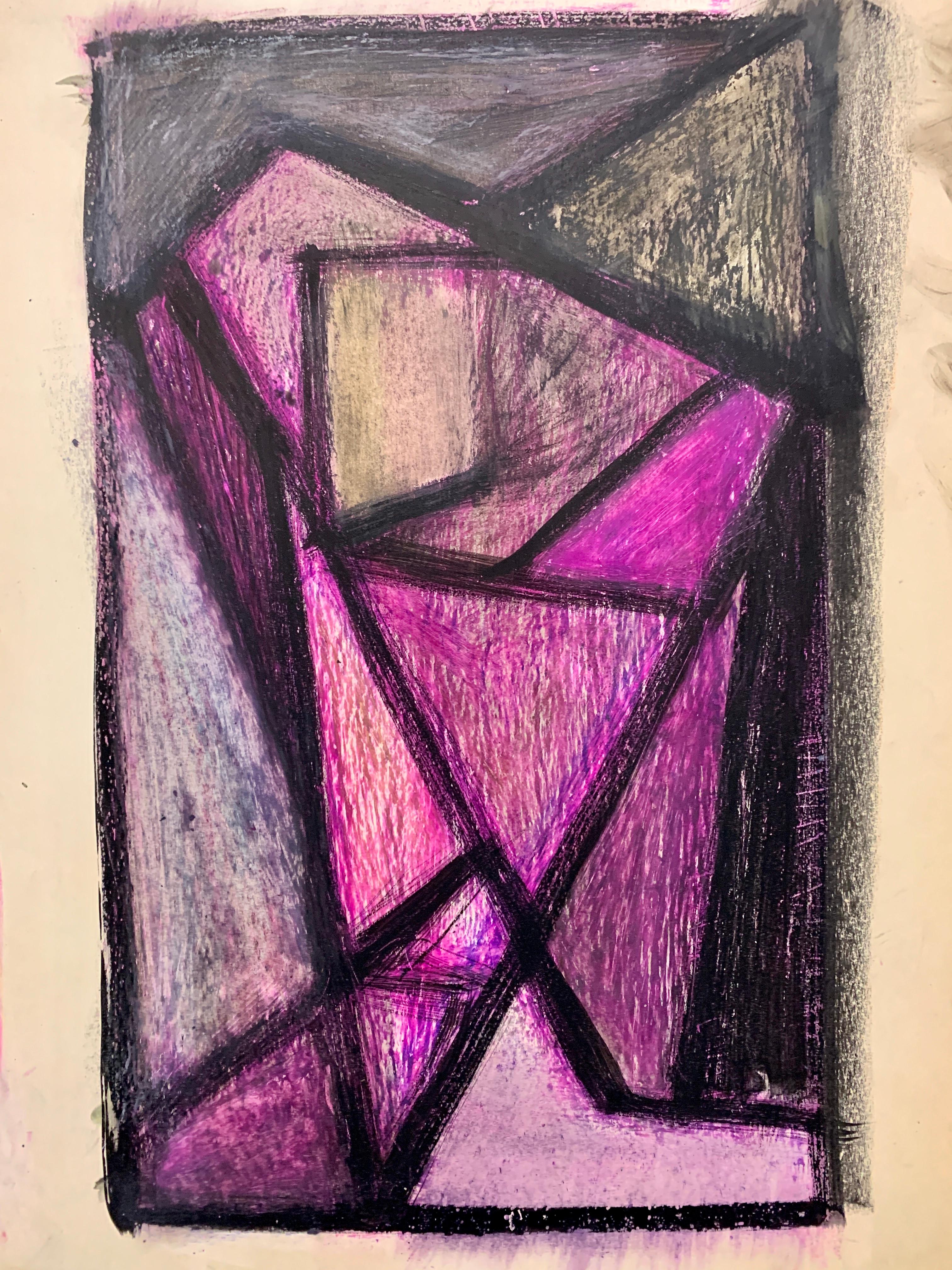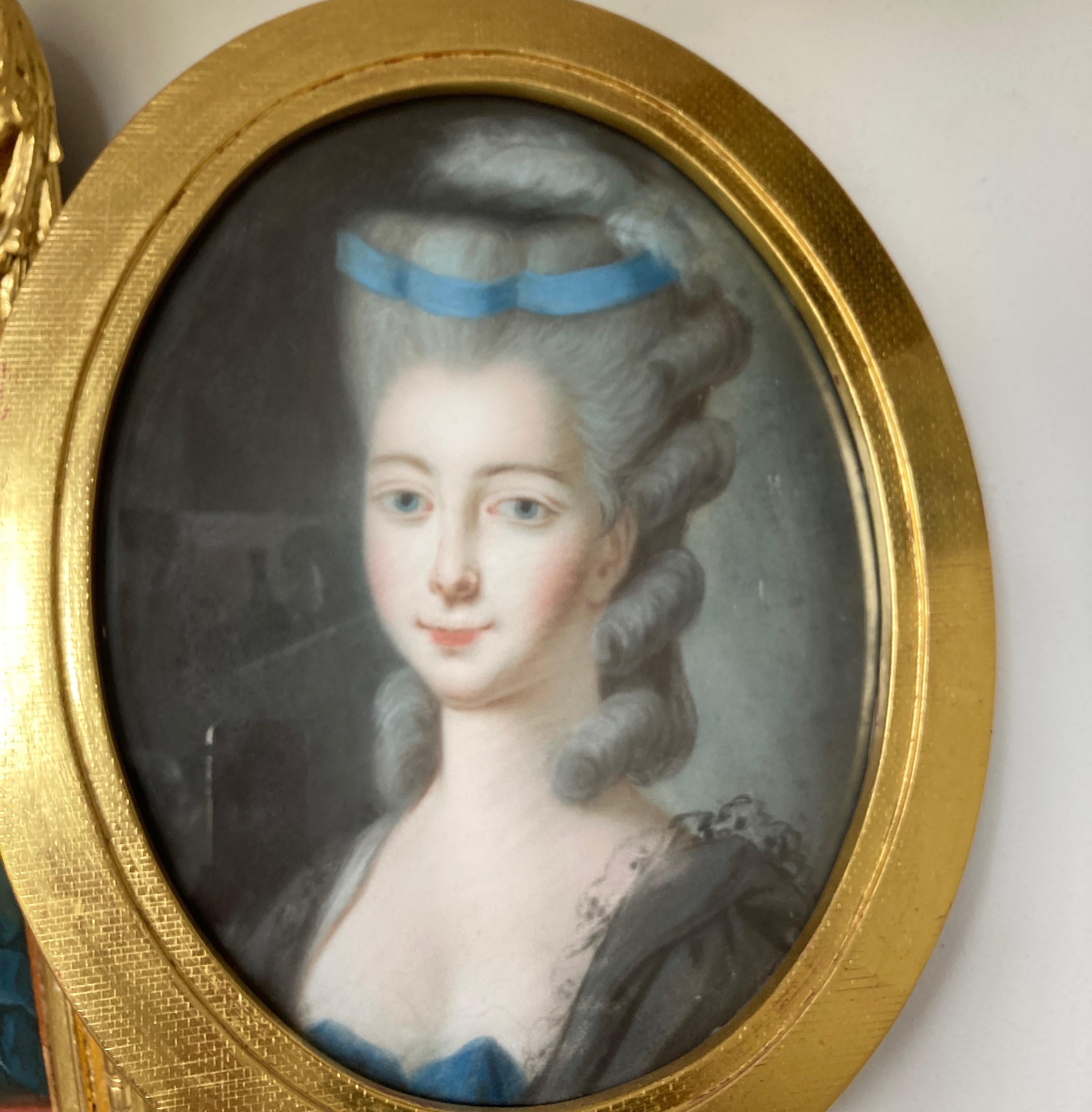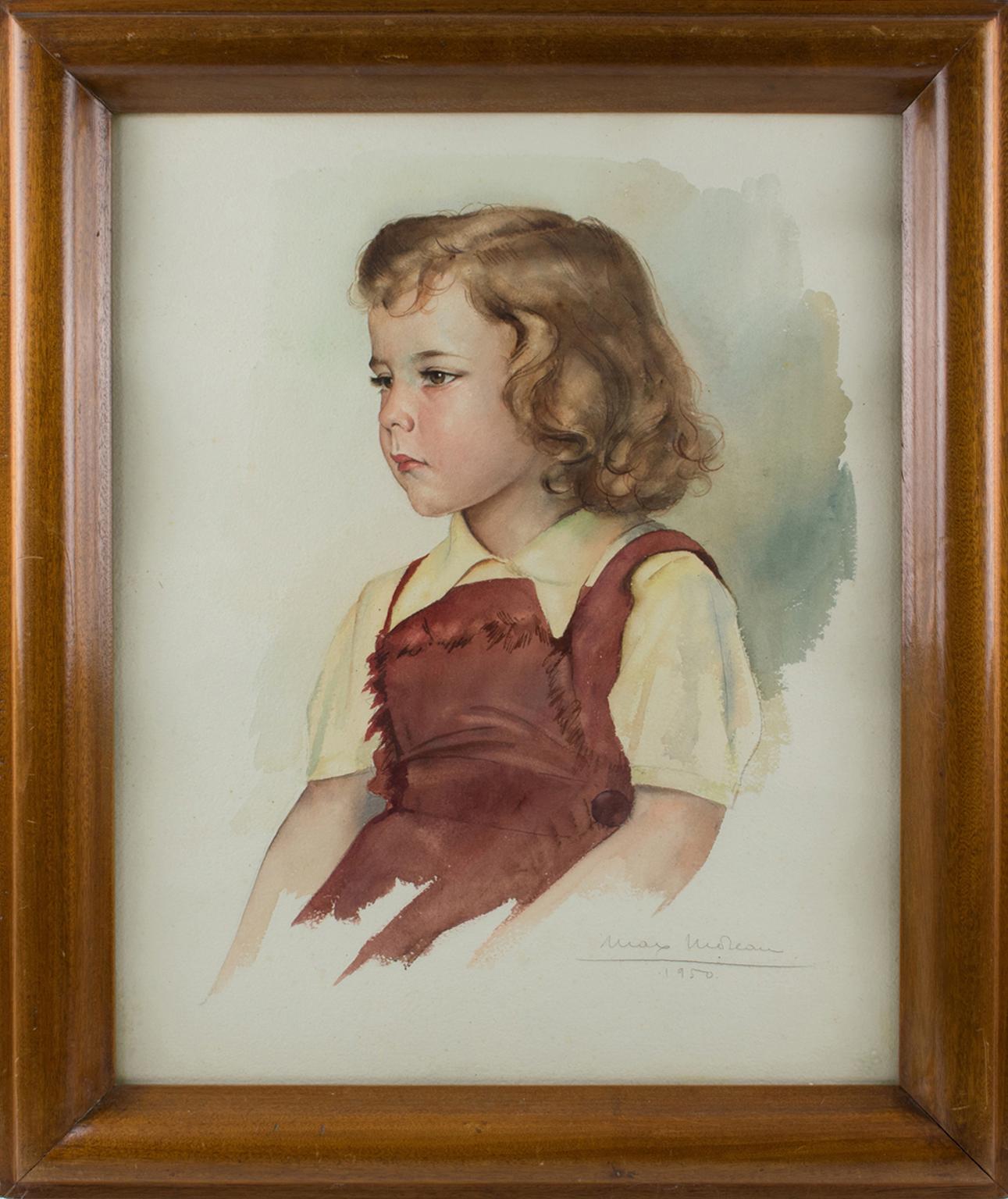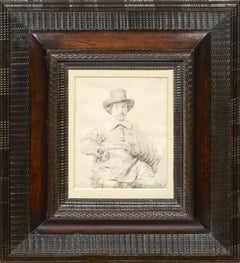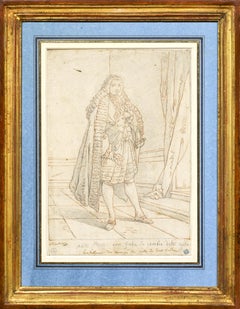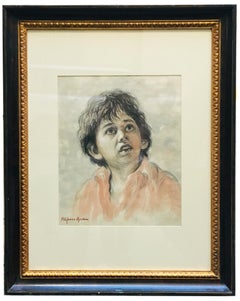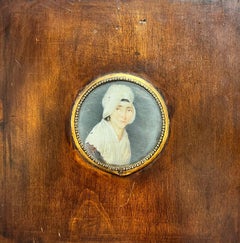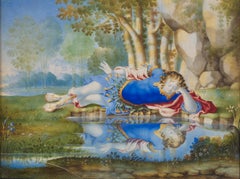
A portrait of the Grand Dauphin as Narcissus attributed to Henri Gascar
View Similar Items
Want more images or videos?
Request additional images or videos from the seller
1 of 6
A portrait of the Grand Dauphin as Narcissus attributed to Henri Gascar 1679 - 1680
1679 - 1680
About the Item
- Attributed to:Henri Gascar (1634 - 1701, French)
- Creation Year:1679 - 1680
- Dimensions:Height: 5.94 in (15.09 cm)Width: 7.5 in (19.05 cm)
- Medium:
- Movement & Style:
- Period:1670-1679
- Condition:Gouache on vellum stretched over a copper plate 5 15/16 “ x 7 ½ “ (150 x 190 mm) (Framed 8 13/16 “ x 10 5/8 “ - 22.5 x 27 cm) Gilded and carved wood frame from the Louis XIII period A slight tear in the vellum at the bottom left.
- Gallery Location:PARIS, FR
- Reference Number:1stDibs: LU156829956542
About the Seller
5.0
Vetted Seller
These experienced sellers undergo a comprehensive evaluation by our team of in-house experts.
Established in 2020
1stDibs seller since 2021
8 sales on 1stDibs
Typical response time: 2 hours
More From This SellerView All
- Portrait of a Newlywed by Casper Casteleyn, an artist of the Dutch Golden AgeLocated in PARIS, FRThis marvelous portrait on vellum is the work of a rare Dutch Golden Age artist, Casper Casteleyn, who has also drawn a closely related portrait now at the Fondation Custodia in Pari...Category
17th Century Old Masters Portrait Drawings and Watercolors
MaterialsChalk, Vellum
- Costume of an envoy of Venice, a drawing by Francesco Galimberti (1755 - 1803)Located in PARIS, FRWe thank Mrs. Bożena Anna Kowalczyk who suggested the attribution to Francesco Galimberti based on a photograph of the artwork. This engaging drawing, finely executed in black and red chalks, depicts a Venetian diplomat in his 'new clothes...Category
1780s Old Masters Portrait Drawings and Watercolors
MaterialsChalk
- Portrait of a Lady, Drawing Signed and Dated by Augustin de Saint-AubinBy Augustin de Saint-AubinLocated in PARIS, FRThis drawing full of freshness presents us with the profile of an elegant lady, drawn by Augustin de Saint-Aubin on a beautiful summer day in 1776, during the early months of Louis X...Category
1770s Old Masters Portrait Drawings and Watercolors
MaterialsPastel, Pencil
- The Arab Butcher, a preparatory drawing by Gustave Guillaumet (1840 - 1887)Located in PARIS, FRThis intensely expressive figure is a preparatory study for "Arab Market on the Tocria Plain", a painting exhibited at the 1865 Salon and now in the Musée des Beaux-Arts in Lille. 1...Category
1860s Old Masters Figurative Drawings and Watercolors
MaterialsChalk, Carbon Pencil
- Portrait of Jean-Baptiste Greuze, painted on linen by his daughter Anna GreuzeLocated in PARIS, FRThis replica of the last self-portrait of Jean-Baptiste Greuze painted in 1804, executed by his daughter Anna at her father's side and recently rediscovered, provides us with a poignant image of the great artist, represented with panache despite the disillusions of life. 1. Jean-Baptiste Greuze Jean-Baptiste Greuze was the sixth child of a roofer from Tournus and retained a certain rusticity in his behaviour from his provincial childhood, beyond his taste for describing picturesque scenes of the countryside. He initially started training with a little-known painter from Lyon, Charles Grandon, before his genius was recognised in Paris where he became a full-time student of the Académie (of Painting) in 1755. He exhibited his work for the first time at the Salon during the summer of 1755, before leaving on a trip to Italy in the company of Louis Gougenot, abbot of Chezal-Benoît. Upon his return to Paris, Greuze became a prolific painter, participating widely in the Salons held between 1759 and 1765, to which he sent no less than 63 paintings: numerous genre scenes (The Marriage Contract, The Beloved Mother), but also portraits of his family circle, of courtiers and art lovers, or of his colleagues. The Academy closed the doors of the Salons to him in 1767 for not having produced his reception piece within six months of his reception, as was the tradition. He worked actively on this painting (Emperor Severus rebukes Caracalla, his son, for trying to assassinate him ) until the summer of 1769, tackling historical and mythological subjects for the first time. Once this was completed, he was then fully admitted to the Academy, but as a genre painter, and not as an historical painter, which had been one of the greatest humiliations of his life. Greuze then refused any participation in events organised by the Academy or its successor, the Academy of Fine Arts until 1800. Abandoning history painting, he gave a new twist to genre scenes, bringing them closer to history painting, as in this pair of canvases which constitutes some of his masterpieces: The Paternal Curse: The Ungrateful Son and The Paternal Curse: The Punished Son . Married in 1759 to Anne-Gabrielle Babuti, the daughter of a Parisian bookseller, his marriage was unhappy and his wife probably frequently unfaithful. The institution of divorce enabled him to record their separation in 1793, keeping his two daughters Anna-Geneviève, born in April 1762, and Louise-Gabrielle, born in May 1764, with him. Little is known about his daughter Anna except that she was herself a painter and lived with her father until his death. It is likely that most of the paintings she produced up to that date were attributed to her father, whose technique she shared to a great extent, making it extremely difficult to establish an autonomous corpus of her paintings. Greuze died in his studio at the Louvre on March 21st 1805. The attention paid to the expressivity of his characters and the emotional charge they convey enabled Jean-Baptiste Greuze to enjoy immense popularity with the eighteenth-century public, and they still constitute Greuze's true modernity. As the artist said, "I dipped my brush in my heart". Greuze was also an exceptional draughtsman and a portraitist of immense talent and exceptional longevity who painted both the Dauphin (the son of Louis XV and father to Louis XVI) and the young Napoleon Bonaparte. 2. Greuze's self-portraits Greuze was very much influenced by Dutch paintings during all his life. While the source of his inspiration for genre scenes can be found in Gerard Dou...Category
Early 1800s Old Masters Portrait Paintings
MaterialsLinen, Oil
- Portrait of Julien Prieur as a hunter - Circle of Jean-Baptiste Oudry 1686-1755By Jean-Baptiste OudryLocated in PARIS, FRThis portrait depicts us the trusted confidant of the Conflans d'Armentières family. More precisely, Julien Prieur was the fiscal procurator of the Marquisate of Armentières, playing the role of representative of the "public ministry", safeguarding the interests of his lord. His role, one can imagine, was crucial at the death of Michel de Conflans (in 1717) since the latter left an heir, Louis, aged only 6, and a widow, Diane Gabrielle de Jussac, whom some memoirs describe as "a very clever grande dame" . Prieur ensured the smooth running of the family's affairs and it is probably to thank him for his services that Diane Gabrielle had his portrait painted, most probably by a painter close to Jean-Baptiste Oudry. Julien Prieur appears as he is, middle-aged, with a benevolent look, in his hunting suit. Only his knotted wig links him to the nobility. Above all, he is depicted as a hunter, a passion that he shared with the Marquis of Armentières. His very young master, Louis, became a first-rate hunter, hunting in the King's entourage, in whose cabinet he died of apoplexy in January 1774. As for the his son, he was one of Louis XVI's closest hunting companions, as numerous souvenirs attest . 1. Some biographical information about the model and the commissioner While the identity of many 18th century portraits is uncertain, an old label stuck on the reverse of the canvas gives us some precise information on the identity of the model: "Mr. Julien Prieur, homme d’affaires de Mr. le Marquis d'Armentières - Commune of Brécy - Aisne". The label also suggests that it could be his son Louis Prieur living in Rocourt (probably Rocourt-Saint-Martin, a neighbouring municipality of Brécy), born on 30 September 1745, who died on 8 July 1826, but this hypothesis must be rejected in view of the model's clothing. This label probably gives us an indication on the previous owner the owner of this painting; we will see later why it seems likely that this label was affixed between 1826 and 1832. Brécy is now a municipality in the Aisne County (Hauts-de-France) located between Soissons and Château-Thierry, slightly north of the Paris-Reims axis. It borders the municipalities of Armentières-sur-Ourcq and Rocourt-Saint-Martin. According to Louis Prieur's death certificate, he was in fact born in 1743 and not in 1745 . The age of the model in the painting and the dating of this painting would indicate that Julien Prieur, was probably born at the very end of the 17th century. In Louise-Marthe de Conflans-Coigny, chatelaine de Brécy , we read that "the Conflans were a family of ancient nobility, which genealogists trace back to the 12th century, when it was said to have come from the house of Brienne. In the 16th and 17th centuries, this family had several illustrations in the profession of arms. [...] Michel de Conflans, [...] belonged to a younger branch of the family, of which Saint-Simon wrote, with his acid soaked pen, that "poor and obscure, they had never left their village, where their house resembled a hut" and elsewhere that they "lived on their rifles and cabbages". Fortunately for Michel de Conflans, the last representative of the elder branch, Henriette d'Armentières, made him her heir on her death in 1712. It was through her that the land of Armentières and its 14th century castle became part of the estate of this branch, as well as, not far from there, the land of Brécy and the castle of Le Buisson, where the family lived. In the early years of the 18th century, Michel de Conflans was able to push himself into the entourage of the Duke of Orleans, becoming his first gentleman of the chamber. However it was above all his son Louis who restored the family status through his military career. Born on 23 February 1711, Louis de Conflans, Marquis d'Armentières died of apoplexy on 18 January 1774, in the King's cabinet at Versailles. Appointed lieutenant general in 1746, he received his Marshal of France’s stick in 1768. The Dictionary of French Biography writes of him that "without ever achieving a high command, he appeared with honour in all the wars of his time". The estates of Armentières and Le Buisson were sequestered during the French Revolution, declared national property and sold at auction (in 1794 and 1795 respectively) after the Marquise d'Armentières, the Marshal's second wife, was beheaded in 1794. The Château du Buisson (where Michel de Conflans died in 1717) was bought by a granddaughter of the Marshal de Conflans, the Marquise de Coigny, in 1816 and remained in her family after her death in 1832 until the sale of the 1,054 hectares estate in 1866. The bayonet blows that probably pierced the canvas in three places may well have a revolutionary origin and it is conceivable that the painting, acquired by the Marquise de Coigny from Louis Prieur, Julien's son, after the latter's death, was then restored and given the label specifying the name of the model. 2. Description of the portrait The painting presents a man in his thirties in his hunting costume. Pictured at mid-body, his face is marked by his life in the open air and characterised by a look of great bonhomie. Holding a rifle under his elbow, he is soberly dressed in a large caramel-coloured jacket, decorated with silver buttons. Presented in a three-quarter view, the model holds a partridge in his right hand. The jacket opens onto a vermilion waistcoat. A green shoulder strap probably holds a powder flask hidden under his arm while a satchel is visible on his belt. The model is wearing a grey wig, tied at the back with a black ribbon that seems to fly in the wind. This ornament anchors Julien Prieur in his time. "The new King of France, Louis XV, [imposed] a style of smaller wigs for men and the rigorous white or preferably greyish powdering. From the middle of the century men also used a ponytail on the back of the neck, tied with a ribbon, a style that became very popular in all courts." He stands out against a dark, purplish sky at the end of an autumn day in a soberly sketched forest landscape. The treatment of the sky recalls the influence of Largillière, Oudry's first master. 3. Jean-Baptiste Oudry Jean-Baptiste Oudry was born on 17 March 1686 in Paris, rue de la Ferronnerie. He began his apprenticeship around 1705-1707 with Nicolas de Largillière, with whom he stayed for five years. In 1713 Oudry established his "livre de raison" in which he reproduced all his early works in wash drawings up until 1718. During this first period which lasted about 7 years, Oudry produced works of great diversity, both in the genres that the artist tackled and in the artists which influenced him. It has been estimated that he painted about 150 pictures during this period: mainly portraits, but also still lifes and some religious paintings and landscapes. Of the hundred or so portraits that Oudry is said to have painted during this period, only fifteen have been identified today. A number of those lost portraits are probably still confused with works by Largillière. First admitted to the Académie de Saint-Luc in 1708, he was then allowed to join the Académie Royale in 1717, and subsequently admitted as a history painter in 1719. This year marks a turning point from which Oudry will assert himself as an animal painter. In 1723 he met Louis Fagon, Intendant of Finances, and the Marquis de Beringhen, the King's first equerry, who became both friends and patrons of the artist, giving him access to royal commissions and enabling him to be appointed as painter of the Royal Tapestry Factory of Beauvais in 1726. From 1728 onwards, the creation of tapestries became the core of his work, even though at the same time Oudry developed his skill as an illustrator, first for Scarron's Roman Comique and then for La Fontaine’s Fables. Between 1726 and 1731, Oudry created the decoration of a large drawing room at the château de Condé-en-Brie, about twenty kilometres from Brécy, which has remained in place to this day. This important commission, about which few details are known, is said to have originated with the Countess de Verrüe, a great lady of the French Regency who often stayed at Condé with her friend Jean-François Leriget, Marquis de la Faye, then owner of Condé. A prolific artist, Oudry fulfilled numerous commissions in parallel with his regular contributions to the Salons, to which he regularly took part until 1753. He suffered a stroke in 1754 and died the following year. It seems almost certain, in view of the importance of his work, that Oudry supervised a workshop in which several artists were involved, but this point is very poorly documented. Given the geographical proximity of Brécy and Condé-en-Brie, the links between the Armentières family and the Condé patrons, and finally based upon the quality of our portrait, we propose the hypothesis that it was painted by one of the painters who worked with Oudry at Condé. 4. Related artworks: comparison with some other portraits of hunters by Jean-Baptiste Oudry While Oudry gradually abandoned portraiture from 1720 onwards to devote himself to animal paintings, he seems to have made an exception for hunter portraits, which were often depicted in the company of their hunting dogs. Two examples seem particularly evocative and suggest a dating for our painting around 1730. We will see in a second part why this dating proposal seems relevant. The first portrait worth mentioning is the presumed portrait of Lieutenant Claude-André Courtin de Crouey, lord of Quatre Fils and Cormeilles-en-Parisis made in 1723, reproduced below. Also presented in a very tight frame, it is interesting for the similarities in the representation of the rifle, and in particular the two metal rivets that are almost identical in our painting. The painting that seems closest to ours is the presumed portrait of Monsieur...Category
1730s Old Masters Portrait Paintings
MaterialsCanvas, Oil
You May Also LikeView All
- CHILD - Alfonso Grassi Watercolor on paper Portrait italian PaintingBy Alfonso GrassiLocated in Napoli, ITCHILD -Watercolorl on paper cm.51x41 signed lower left by Alfonso Grassi, Italy. Wooden frame with passeportout cm.94x73Category
Late 20th Century Old Masters Portrait Paintings
MaterialsPaper, Watercolor
- Antique French Miniature Portrait of Lady Biographical details with paintingLocated in Cirencester, GloucestershireMiniature Portrait French School, late 18th/ early 19th century framed: 5.5 x 5.5 inches board: 2 x 2 inches provenance: private collection, France condition: very good and sound c...Category
Late 18th Century Old Masters Portrait Drawings and Watercolors
MaterialsWatercolor
- Sailors in MarseilleLocated in London, GB'Sailors in Marseille', gouache on art paper, French School (circa 1960s). Ever since the 6th century, there have been fishermen selling their catch in the Old Port of Marseille while sailors from visiting vessels have always enjoyed a night on the town. Today the Old Port is the city’s beating heart, a vital part of Marseille. In this work, the artist depicts a solo French sailor crossing paths with his American counterpart. The Frenchman sports his cap with iconic pom pom rouge while the American sailor is dressed in his white 'Cracker Jack...Category
1960s Portrait Drawings and Watercolors
MaterialsPaper, Gouache
$673 Sale Price20% Off - French Boy in BloomersBy Raymond DebieveLocated in London, GB'French Boy in Bloomers', gouache on art paper (circa 1960s-70s), by Raymond Debiève. A young boy emerges from a beach cabana wearing a bloomer bathing costume that was still in use ...Category
1960s Modern Portrait Paintings
MaterialsPaper, Gouache
$1,969 Sale Price20% Off - La MonteraBy Pierre AmbrogianiLocated in London, GB'La Montera', gouache, watercolour and ink on art paper, by Pierre Ambrogiani (circa 1960s). The artist created many artworks with bullfighting as theme. In this case, a single torer...Category
1960s Expressionist Portrait Drawings and Watercolors
MaterialsPaper, Watercolor, Gouache
$1,244 Sale Price40% Off - 'The Market Seller in Nice' French Vintage Gouache PaintingBy Alfred SalvignolLocated in London, GB'The Market Seller in Nice', gouache on paper, by Alfred Salvignol (circa 1950s). The role of women as support to their families has been both very important and highly undervalued b...Category
1950s Modern Portrait Drawings and Watercolors
MaterialsPaper, Gouache
$673 Sale Price20% Off
Recently Viewed
View AllMore Ways To Browse
Grand Tour Watercolour
Louis Van T
Gouache Jewel
Wall Plate 1983
4 Miniature Portraits
Red Baron
Miniature Portrait Of A Lady
Copper Watering Can Antique
Antique Copper Watering Can Copper
Antique Copper Watering Can
Anne Marie Of Paris
Tree Of Life Wall Hanging
Vertical Wall Hanging
Prince Charles Watercolours
Narcissus Painting
Antique Anatomy Drawings
Percy Gray
Tour De France Plates
